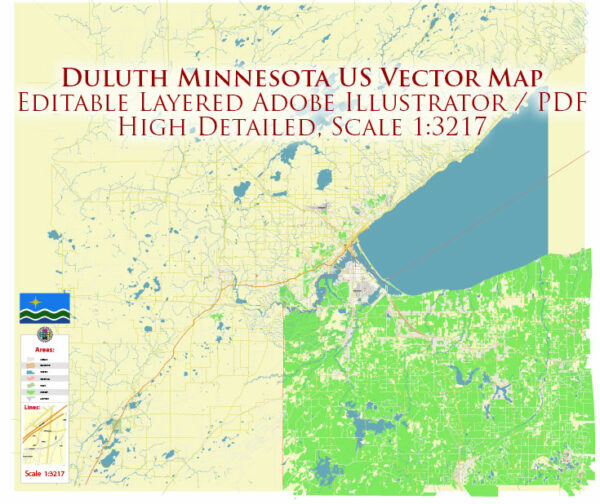Duluth, Minnesota, has a rich history of urban development that spans over a century. The city, located on the western tip of Lake Superior, played a significant role in the development of the region as a major transportation and trade hub. Here is a brief overview of the key aspects of Duluth’s urban development history:
- Early Settlement and Indigenous Presence (17th-19th Century):
- The area around Duluth was originally inhabited by the Dakota and Ojibwe Native American tribes.
- The first European to explore the area was Daniel Greysolon, Sieur du Lhut, a French explorer, in the late 17th century.
- Fur Trading and Early Industry (19th Century):
- The establishment of the American Fur Company trading post in the early 19th century contributed to the growth of the settlement.
- The discovery of iron ore in the Mesabi Range in the late 19th century led to an economic boom, as Duluth became a major shipping and transportation center for iron ore.
- Transportation and Shipping (Late 19th Century):
- The completion of the Duluth Ship Canal and the opening of the Duluth Aerial Lift Bridge in 1905 enhanced the city’s role as a vital shipping port on the Great Lakes.
- The expansion of railroads further connected Duluth to the rest of the country, facilitating the transportation of goods.
- Industrialization and Economic Growth (Early to Mid-20th Century):
- Duluth’s industrial base expanded with the growth of industries like paper milling, lumber, and manufacturing.
- The city’s population increased as people moved to Duluth in search of employment opportunities in these industries.
- Decline and Revitalization (Late 20th Century):
- In the mid-20th century, Duluth faced economic challenges as industries declined and the city experienced population loss.
- Efforts to revitalize the city included waterfront redevelopment, preservation of historic architecture, and the establishment of cultural and recreational amenities.
- Cultural and Recreational Developments (Late 20th Century Onward):
- Duluth has focused on promoting tourism, with attractions like Canal Park, the Lakewalk, and the Great Lakes Aquarium drawing visitors.
- The city’s cultural scene has also flourished, with the Duluth Entertainment Convention Center (DECC) hosting events and concerts.
- Urban Renewal and Sustainable Development (21st Century):
- Duluth has engaged in urban renewal projects, aiming to revitalize neighborhoods and improve infrastructure.
- The city has embraced sustainable development practices, including efforts to enhance green spaces, promote alternative transportation, and address environmental concerns.
Duluth’s history reflects its resilience and adaptability in the face of economic challenges. Today, it stands as a vibrant city with a mix of industry, tourism, and cultural richness, shaped by its unique location and historical influences.


 Author: Kirill Shrayber, Ph.D.
Author: Kirill Shrayber, Ph.D.